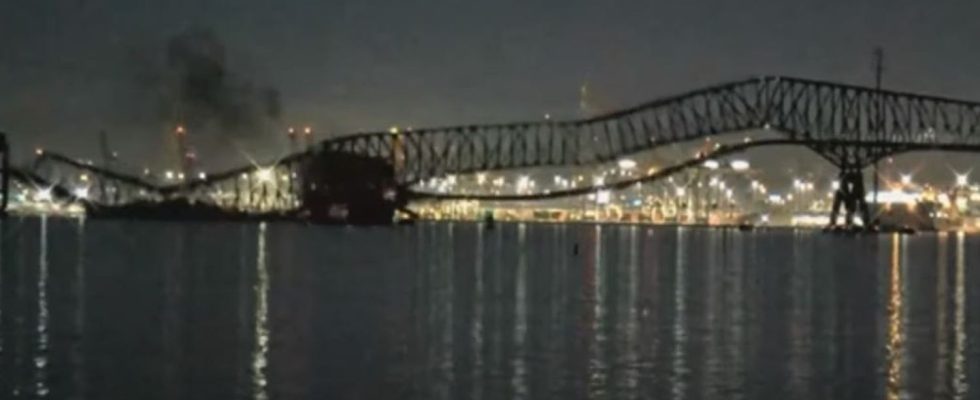Not only was the boat too big, but it also strayed from its navigation channel. “A relatively classic type of accident”, despite everything, according to the bridge and road engineer, Michel Virlogeux.

Published
Update
Reading time: 2 min

“There is absolutely no chance that a bridge pier could withstand such a shock”, commented Tuesday March 26 on franceinfo Michel Virlogeux, bridge and road engineer and designer of the Millau viaduct and the Normandy bridge. A bridge collapsed in Baltimore, Maryland, USA after being hit by a ship dragging vehicles. At least seven people are missing. “It’s not a question of fragility” from the bridge, “the problem is the size of the container ship”, he said. The 300 meter long boat, which seems to have “away from the navigation channel”, has “considerable kinetic energy”.
franceinfo: Could the fragility of the bridge be to blame?
Michel Virlogeux: It’s not a question of fragility. The problem is the size of the container ship. It’s a 300 meter long container ship, it must have been at least probably 100,000 tonnes. This is a considerable mass. Furthermore, a boat like that, which is sailing, carries a mass of water.
“The shock comes not only from the boat, but from the entire body of water.”
Michel Virlogeux, designer of the Millau viaduct and the Normandy bridgeat franceinfo
This boat with the mass of water moves with a certain speed. It therefore has considerable kinetic energy. When it hits a bridge pier, it has absolutely no chance of resisting.
It’s almost high-speed propulsion?
It is enormous. There is absolutely no chance that a bridge pier could withstand such a shock. For smaller boats, it can work, but not this. What is especially important is the so-called range on the distance between the two piers which clears the navigation channel. Obviously, the boat has deviated from the navigation channel. So obviously, it’s not every day, but it’s a type of accident that is relatively classic. The Normandy bridge that I built was designed to protect itself from this sort of thing by putting the piers outside the river. You have a pylon which is on the left bank, on land, a pylon towards the right bank, along the dike, protected by a protective enclosure in the event that boats deviate very widely from the navigation channel.
Container ships are getting bigger and bigger. It is even more necessary to ensure the solidity of these works?
Obviously. When the Danes built the Great Belt Bridge, they did extensive research. Finally, the Great Belt Bridge has a span between the two pylons of 1,624 meters to reduce risks. Very large boats like that are very hard to maneuver. We cannot change direction at the last moment.
